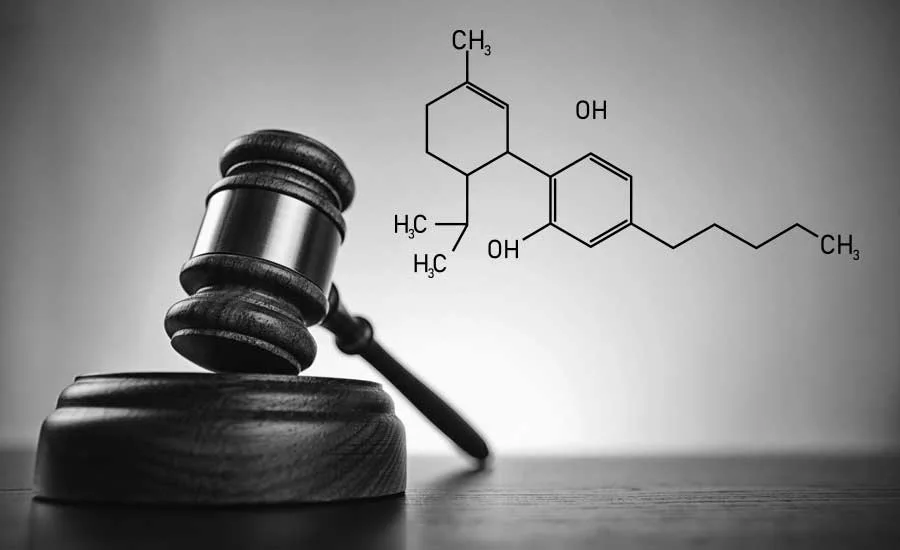CANNABIS PRODUCTS | AUGUST 2019
CBD's shades of gray
While federal regulators have begun to focus in on cannabidiol regulation, much greater clarity is still required.

FDA held a public hearing, “Scientific Data and Information about Products Containing Cannabis or Cannabis-Derived Compounds,” on May 31, 2019, for cannabis industry stakeholders and other interested parties to share their experiences and current challenges with products that contain cannabis and/or cannabis-derived compounds. This hearing was designed to include information and views related to the safety of cannabis edibles and beverages—with a strong emphasis on cannabidiol (CBD) ingredients—as well as to solicit input relevant to the agency’s regulatory strategy for existing products. As part of that hearing, FDA opened a docket for the public to submit comments through July 16, 2019.
The hearing included 10 hours of testimony and was designed as FDA’s first step in the process of creating national regulatory structure for CBD, the primary non-psychoactive cannabinoid in Cannabis sativa plants touted for its medical and therapeutic benefits. Botanically, Cannabis sativa plants include both industrial hemp and cannabis plants bred for high levels of psychoactive tetrahydrocannabinol (THC).
The Status Quo
For the latest insights on developing cannabis-infused food and beverages, visit cannabisproductsmagazine.com
While the products of Cannabis sativa plants bred for high levels of THC remain federally classified as Schedule I substances, the 2018 Farm Bill declassified cannabis plants that have been bred to have a low THC level (not more than 0.3 percent on a dry weight basis), which federal regulators have now defined as “hemp.” So, per the federal government, those cannabis plants and their derivatives are no longer controlled substances under federal law.
But, during the May 31 hearing, Dr. Norman E. Sharpless, acting commissioner, FDA, clarified the federal position on actual use of those—now federally legal—cannabis components: “The 2018 Farm Bill explicitly preserved FDA’s authority to regulate products containing cannabis or cannabis-derived compounds. In doing so, Congress recognized FDA’s important public health role with respect to all the products it regulates—including when those products are, or contain, cannabis ingredients.”
One sure way to get FDA’s attention is to make health-specific claims for cannabis-containing products. “If a product is being marketed as a drug—meaning, for example, that it’s intended to have a therapeutic effect, such as treating a disease or affecting the body’s structure or function—then it’s regulated as a drug, and it generally cannot be sold without FDA approval,” said Sharpless during the hearing.
The pathway toward CBD ingredient approval will likely follow the FDA’s generally recognized as safe (GRAS) approval process, which is used to approve any new additives to foods and beverages (this includes foods and beverages marketed as “dietary supplements”).
“This requirement applies to cannabis-derived ingredients, just as it does to any other substance,” said Sharpless, noting that some cannabis-derived substances have already come to market through the GRAS pathway. “In December, FDA announced that we completed our evaluation of GRAS notices for three hemp seed ingredients and had no objection to their being marketed in human foods for certain uses without approval, provided they comply with all other requirements,” he explained.
FDA has also approved a handful of cannabis-derived drugs for medical treatment of conditions like epilepsy, as well as the side effects from cancer treatment and AIDS, including loss of appetite and weight loss.
FDA has regularly issued warning letters to manufacturers of CBD-containing products. And while many U.S. states have provided a clarified position on the legality of CBD-containing products, that status changes when crossing state lines. The Federal Food, Drug & Cosmetic Act prohibits adding drugs to human food engaged in interstate commerce. In effect, the product is then classified as a drug, making its unapproved sale a violation of federal law.
So we will continue to wait for FDA to determine its positioning overall on use of cannabis and/or hemp-derived CBD for use in foods and beverages, a ruling that will have an immediate impact on the national market for such foods.
Next Steps
Top questions FDA will need to address in its review will include how much CBD is safe to consume in a day, the safety of using CBD during pregnancy, CBD and children, and long-term implications of its use.
In the meantime, it’s recommended that manufacturers of legal CBD-containing edibles and beverages refrain from making any specific claims related to health or medical conditions.
“Our biggest concern is the marketing of products that put the health and safety of consumers at risk, such as those claiming to prevent, diagnose, mitigate, treat or cure serious diseases, such as cancer, in the absence of requisite approvals,” said Sharpless. “That being said, the agency does not have a policy of enforcement discretion with respect to any CBD products.”
Now that the extended comment period for this issue has closed, the industry will eagerly await response from FDA. Until then, in the absence of black-and-white federal positioning, CBD will continue to inhabit legal shades of gray.
Looking for a reprint of this article?
From high-res PDFs to custom plaques, order your copy today!







